



In which the spectre of the Luddite software engineer is raised, in an AI-driven future where programming languages become commercially redundant, and therefore take on new cultural significance.
In 1812, Lord Byron dedicated his first speech in the House of Lords to the defence of the machine breakers, whose violent acts against the machines replacing their jobs prefigured large scale trade unionism. We know these machine breakers as Luddites, a movement lead by the mysterious, fictional character of General Ludd, although curiously, Byron doesn’t refer to them as such in his speech. With the topic of post-work in the air at the moment, the Luddite movements are instructive; The movement was comprised of workers finding themselves replaced by machines, left not in a post-work Utopia, but in a state of destitution and starvation. According to Hobsbawm (1952), if Luddites broke machines, it was not through a hatred of technology, but through self-preservation. Indeed, when political economist David Ricardo (1921) raised “the machinery question” he did so signalling a change in his own mind, from a Utopian vision where the landlord, capitalist, and labourer all benefit from mechanisation, to one where reduction in gross revenue hits the labourer alone. Against the backdrop of present-day ‘disruptive technology’, the machinery question is as relevant as ever.
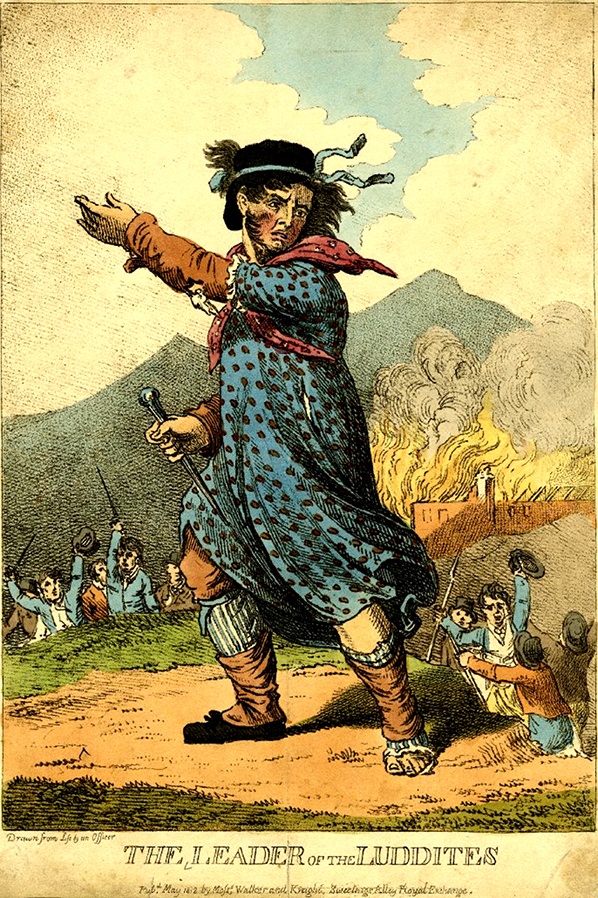
A few years after his speech, Byron went on to father Ada Lovelace, the much celebrated prototypical software engineer. Famously, Ada Lovelace cooperated with Charles Babbage on his Analytical Engine; Lovelace exploring abstract notions of computation at a time when Luddites were fighting against their own replacement by machines. This gives us a helpful narrative link between mill workers of the industrial revolution, and software engineers of the information revolution. That said, Byron’s wayward behaviour took him away from his family, and he deserves no credit for Ada’s upbringing. Ada was instead influenced by her mother Annabella Byron, the anti-slavery and women’s rights campaigner, who encouraged Ada into mathematics.
Today, general purpose computing is becoming as ubiquitous as woven fabric, and is maintained and developed by a global industry of software engineers. While the textile industry developed out of worldwide practices over millennia, deeply embedded in culture, the software industry has developed over a single lifetime, the practice of software engineering literally constructed as a military operation. Nonetheless, the similarity between millworkers and programmers is stark if we consider weaving itself as a technology. Here I am not talking about inventions of the industrial age, but the fundamental, structural crossing of warp and weft, with its extremely complex, generative properties to which we have become largely blind since replacing human weavers with powerlooms and Jacquard devices. As Ellen Harlizius-Klück argues, weaving has been a digital art from the very beginning.
Software engineers are now threatened under strikingly similar circumstances, thanks to breakthroughs in Artificial Intelligence (AI) and “Deep Learning” methods, taking advantage of the processing power of industrial-scale server farms. Jen-Hsun Hu, chief executive of NVIDIA who make some of the chips used in these servers is quoted as saying that now, “Instead of people writing software, we have data writing software”. Too often we think of Luddites as those who are against technology, but this is a profound misunderstanding. Luddites were skilled craftspeople working with technology advanced over thousands of years, who only objected once they were replaced by technology. Deep learning may well not be able to do everything that human software engineers can do, or to the same degree of quality, but this was precisely the situation in the industrial revolution. Machines cannot make the same woven structures as hands, to the same quality, or even at the same speed at first, but the Jacquard mechanism replaced human drawboys anyway.
As a thought experiment then, let’s imagine a future where entire industries of computer programmers are replaced by AI. These programmers would either have to upskill to work in Deep Learning, find something else to do, or form a Luddite movement to disrupt Deep Learning algorithms. The latter case might even seem plausible when we recognise the similarities between the Luddite movement and Anonymous, both outwardly disruptive, lacking central organisation, and lead by an avatar: General Ludd in the case of the Luddites, and Guy Fawkes in the case of Anonymous.
Let’s not dwell on Anonymous though. Instead try to imagine a Utopia in which current experiments in Universal Basic Income are proved effective, and software engineers are able to find gainful activity without the threat of destitution. The question we are left with then is not what to do with all the software engineers, but what to do with all the software? With the arrival of machine weaving and knitting, many craftspeople continued hand weaving and handknitting in their homes and in social clubs for pleasure rather than out of necessity. This was hardly a surprise, as people have always made fabric, and indeed in many parts of the world handweaving has remained the dominant form of fabric making. Through much of the history of general purpose computing however, any cultural context for computer programming has been a distant second to its industrial and military contexts. There has of course been a hackerly counter-culture from the beginning of modern-day computing, but consider that the celebrated early hackers in MIT were funded by the military while Vietnam flared, and the renowned early Cybernetic Serendipity exhibition of electronic art included presentations by General Motors and Boeing, showing no evidence of an undercurrent of political dissent. Nonetheless, I think a Utopian view of the future is possible, but only once Deep Learning renders the craft of programming languages useless for such military and corporate interests.
Looking forward, I see great possibilities. All the young people now learning how to write code for industry may find that the industry has disappeared by the time they graduate, and that their programming skills give no insight into the workings of Deep Learning networks. So, it seems that the scene is set for programming to be untethered from necessity. The activity of programming, free from a military-industrial imperative, may become dedicated almost entirely to cultural activities such as music-making and sculpture, augmenting human abilities to bring understanding to our own data, breathing computational pattern into our lives. Programming languages could slowly become closer to natural languages, simply by developing through use while embedded in culture. Perhaps the growing practice of Live Coding, where software artists have been developing computer languages for creative coding, live interaction and music-making over the past two decades, are a precursor to this. My hope is that we will begin to think of code and data in the same way as we do of knitting patterns and weaving block designs, because from my perspective, they are one and the same, all formal languages, with their structures intricately and literally woven into our everyday lives.
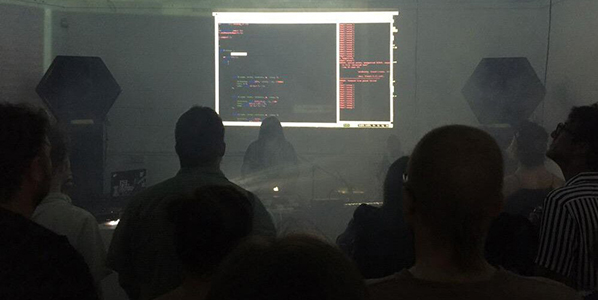
So in order for human cultures to fully embrace the networks and data of the information revolution, perhaps we should take lessons from the Luddites. Because they were not just agents of disruption, but also agents against disruption, not campaigning against technology, but for technology as a positive cultural force.
This article was written by Alex while sound artist in residence in the Open Data Institute, London, as part of the Sound and Music embedded programme.
“I-love-you: the figure refers not to the declaration of love,
to the avowal,
but to the repeated utterance of the love cry.”
Roland Barthes, The Lover’s Discourse. Fragments, 1977.
Designed and published online on October 14th 2004[1], restored for The Wrong (Again) on November 1st 2015, the website I Love You by French artist Jacques Perconte[2] is not only a wonderful achievement of his research on image files visualization through the Internet, but also a fundamental piece of artwork for three reasons: first, it crystallizes a history of audiovisual technologies in the web age; next, it allows the analysis of his singular inventions on plasticity which are shaped by the offensive processes and techniques Perconte has developed until 2015; finally, it makes explicit the artist’s constant will to put the body to the test of digital technologies (in this case the partner’s body) and to literally inject life (each and every thought, interest, feeling, emotion, excitement, and desire aroused in him by the beloved body).
Two events in 2003 gave birth to this piece: a publication proposal from French publisher Didier Vergnaud of a book with the digital photographs of bodies he had been taking tirelessly; and his romantic encounter with the woman who would become his partner, muse and model, Isabelle Silvagnoli. I Love You merges two stories, two passions. The one with Isabelle blooms in May 2003[3]; at this time, Perconte has already an extensive experience of digital technologies that he had developed since 1995[4].
At the Bordeaux University, when Perconte notices that a computer is connected to the rest of world, he becomes aware of the technical and aesthetic issues of the digital network, issues largely ignored at this time. His quick mastering of how the web operates leads to a decisive work on “the digital bodies”: three image generator websites (ncorps) and four films made by re-filming multiple loops of these animated pictures. This series denotes that Perconte has assimilated four essential dimensions of the digital.
First, he notes the image exists primarily in the state of a compressed digital signal that needs to be displayed; the signal recorded and stored as a file is a model, shaped by algorithms; its visualizations change only according to the codecs and the supports. Next, he distinguishes the human dimension of the web: the bodies of the users surfing the Internet on their computers and interlinking one another.
Then, the material dimension: the computers interconnected by an abundance of servers all around the world which produces a random digital time; indeed Perconte noticed the connection time to the hosting server of his websites was unpredictable since the answering time fluctuated according to the Internet traffic density, the connection’s and the browser’s qualities, and the computer’s performance executing the query.
So he notices the fantastic system failures: “when the first JPEGs popped up on websites, it wasn’t unusual for a picture to be only partially displayed. Sometimes, this happened to produce strange distortions in the image. (…) Every now and then, the image would totally turn into an abstract composition with amazing colors.”[5] Consequently, these fluctuations of display reveal a prodigiously fertile field of investigation: recoding the visualization. Finally, the web can be defined by the coexistence of places, bodies, machines, protocols and programs interacting in complex ways as an evolving ecosystem. Thus, a device aimed at transforming models could be designed (model meaning both the person the artist reproduces with forms and images and the coded reduction), as GIF or JPEG sequences animated on a website. Since the parameters involved in the visualization of these sequences are renewed at each connection, Perconte knows these metamorphosis will be unlimited and give birth to n bodies [corps]). This research allowed Perconte to establish, by 1996, a stable platform aimed at recoding the visualization within the web to ultimately break the limitations of the model’s code into which the digital signal is reduced.

As he undertakes assembling photographs of Isabelle for the book project (38 degrés), this experience of the web will come back to him. The collection of several thousands digital pictures springs from the extensive exploration of the beloved body’s patterns and the obtained signals he looped (he retakes the displayed pictures several times), in an attempt to test the representation of love. The problem is twofold. On the one hand, this collection can only be unlimited since the observation is inexhaustible as he puts it: “when I think about her body, I dream of landscapes so large that one gets lost completely, there is so much to recognize, kilometers of skin where warmth rules, a soft, almost empty desert. Beauty, immensity where every vibration of light pushes the colors to reveal themselves in new ways. The variations (…) are endless.”[6] Furthermore, despite experimental photography techniques, he quickly reaches the limits of how much an image is capable of expressing absolute love. In order to find and visualize this love present within these files, Perconte selects and ranks hundreds of these images in a database and places them in an ecosystem on the web.
Perconte developed a server-side program by writing an open source application in PHP, the love writing program[7], in order to quantify the love present in the source code of these digital images displayed on the web. Love being unquantifiable by definition, the artist must add an arbitrary but rigorous calculation. This quantification is performed by the application triggered when a user clicks on one of the images of the collection: it calculates a specific variable by taking into account all the physical parameters of the connection but also the mathematical constants of proportions and universal harmony – ∏ and F (the golden section); then the application opens the image file, transforms it as a hexadecimal code and substitutes every occurrence of the sought value by the phrase “I Love You,” thus changing the architecture of the code describing the image. The browser requested to visualize the image compiles the modified code, but can only display it partially, at the cost of radical visual transformations, such as reconfigurations pixel structures, the emergence of new colors resulting in the reinterpretation of original motifs or subjects; the greater the amount of pure love, the more intense the abstraction. The motifs of the beloved body can mingle or merge entirely with the figuration of love. The browser is sometimes unable to visualize the image resulting in the appearance of a broken icon with a quote from Roland Barthes: “To try to write love is to confront the muck of language: that region of hysteria where language is both too much and too little, excessive (…) and impoverished (…).”[8]The broken icon evokes a digital iconoclasm, but furthermore signifies the limitations of visualization protocols that have been overtaken by an overflow inexpressible love. This substitution in the image source code of a value by the literal writing of love, raises the Perconte’s program to a “loveware.”[9]
Not only has Perconte given life to this website, but he has been maintaining it for the eleven years he has been sharing his life with his partner. First and foremost, he constantly upgrades it. Indeed, he programmed on February 14th 2005 an “I Love You Collection” of all the “I Love You’s” which will be written in the images’ source code; from this description, the “Love Counter” determines the number of “I Love You’s” and their transposition in bytes: “This is a concrete and scientific way to know as precisely as possible how much love is streamed online, and more importantly how much love is contained in this work. Every time a picture is displayed and the code modified by love messages, the counter is updated. The more time goes by, the more love grows.”[10] Thus, the users themselves, without suspecting it, testify to the history of this Perconte’s love for his partner, write this love, perpetuate and amplify it. Donating his images to the network, leaving it to others to speak for him, the artist is no longer the excessive delirious lover (wonderfully described by Barthes[11]), but one who loves. Then, the artist updates his website on a regular basis.
For each exhibition he replaces the image collection and operates small technical changes in order to avoid falling behind on the developments of the web. Furthermore, he designed a photographic exhibition of this work started in 2003, It’s All About Love, from January 17th to April 17th 2008 in Pessac, where he gives to the public a synthesis and extension of the project, in the form of prints and animations on iPods[12]. Finally, he undertakes a complete restoration of the website in 2015. Indeed, I Love You has suffered from a rapid disruption of the web and the visualized pictures often began to show large gray patches. The invitation from The Wrong gave him the opportunity to get back to this core piece. The solution – consisting in placing the website in its original technological context, that is to say, on a server with the same configurations as in 2004 – was met with refusal from the web hosting providers. This is how he decided to work with one of his students of Chalon-sur-Saône, Garam Choi, a true code virtuoso, in order to rethink the programming of the website according to a large principle which governs web in recent years.
From the beginning of the web until the posting of I Love You, applications were executed by servers. However, with the exponential increase in web traffic, servers quickly became overloaded; moreover, computers have seen their computing power and storage soar while other programming languages, like JavaScript, gained importance. Thus, the logic that governed web-programming moved applications to the client-side. Choi and Perconte have therefore developed identically, from the original program in PHP, an application written in JavaScript so that it could be interpreted on the client-side, while maintaining the database on a server. The issue at stake was to create a dialogue between the server and the client-side application, especially to quantify the number of “I Love You’s” and write it into the database. Indeed, server specifications entail technological obstacles as soon as the instructions are not in compliance with the protocol. But the artist was quickly able to find a way to instruct the program to circumvent the prohibitions. Indeed, not only does he operates the substitution technique to modify the images source codes, but uses it as a trick to fool the server. The idea is to do it as if the client were loading an image from the server to display it; but the called address executes instead a script, in other words, instead of the image URL, the number of “I Love You’s” is shown.
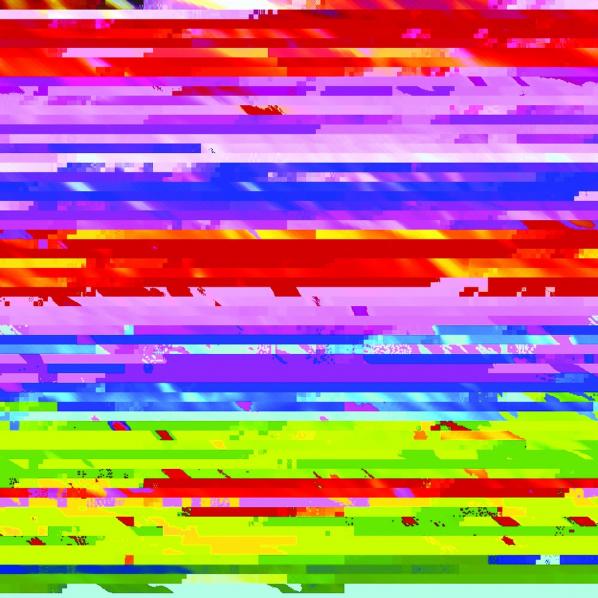
The website restoration therefore takes hold of the website’s programming in the 2010’s, but reinvents it with ingenuity. It also alerts the Internet user on how some multinationals IT companies (Apple, Google) consider the universality of the net: Chrome hinders some images display, while Safari denies their visualization. Also, in the latter case, Perconte and Choi have provided the following message to the attention of the user: “Safari is not ready for love. It’s still blind.” On the contrary, the Firefox browser, developed by a global open-source community, allows optimal operation of I Love You at the exact replica of the first 2004 version. Indeed, Mozilla defends a free Internet that would be “a global public resource that must remain open and accessible” in which “everyone should be able to shape the Internet and their own experiences on the Internet.”[13] That is why the growing love of I Love You does not only symbolize the artist in his couple, but elevates itself to a principle of universal union and intimate communion through the web: a set of values that affirm a convivial conception of society resisting consumerist models imposed by technical industries, and taking the power of the Web back in the hands of all users.
I Love You is therefore crucial for the Internet user, the historian, the media theorist, the film analyst, the archivist and the curator of the twenty-first century. It invents a thought of the program as a plasticity fertilization tool through digital visualization technologies understood as open and unstable. It successfully manages to offer bright and virtuoso processes and techniques of recoding, exciting insights on the operation of some display supports and devices, along with their history and unrelenting criticism, and the refined and infinite visual writing of the story of a man in love through a limitless range of radical visual forms generating a pure aesthetic delight. It is an artwork that lives and grows thanks to the Internet users as a digital lining of a relationship blossoming in the world, and which, since it has adapted and transformed to the changing technological environment, becomes the figurehead of a libertarian conception of the Internet and digital technologies in general.
Warmest thanks to Nicole Brenez, Gaëlle Cintré, Kamilia Kard,
Filippo Lorenzin, Zachary Parris,
Jacques Perconte and Isabelle Silvagnoli.
(In)exactitude in Science : http://inexactitudeinscience.com
and I Love You : http://iloveyou.38degres.net
Text is translated from the first french extended edition : http://www.debordements.fr/spip.php?article431
Since the establishment of the World Wide Web, questions have proliferated around the possibilities, value and collectability of its associated contemporary art forms.
The web provides a single site for the creation (and sometimes co-creation), distribution, review and remix of an art form that takes as its medium: code, images, text, video, music and social relations. Historically, the value of an artwork resided in its uniqueness. Now artists, audiences, curators and collectors grapple with an infinitely replicable and distributable art form. This panel discusses an electrifying cluster of controversies: the subversive intentions and emancipatory motivations of many media artists; the needs and concerns of public art collectors and conservators; the opportunities for private collectors and the interests of high art market speculation.
This panel is chaired by Ruth Catlow, artist, co-founder and co-director Furtherfield, established in 1997 for art, technology and social change.
Steve Fletcher – Co-founder of Carroll / Fletcher, a recently established commercial gallery specialising in contemporary socio-political, cultural, scientific and technological themes
Lindsay Taylor – Salford University Art Curator who established the first UK public digital arts collection at the Harris Museum and Art Gallery
Please visit this page to register for this talk.
1) purified social process. Screenshot from VisitorsStudio, by Furtherfield 2011
2) The Lover by James Coupe. Surveillance video installation commissioned by Harris Museum, 2011
So ArtForum have launched a special September issue investigating the, lets say broader, relationship between new media, technology and visual art.*
Of worthy mention is the essay Digital Divide by the art world’s antagonistic critic of choice Claire Bishop, a writer whom a little under 8 years ago, deservedly poured critical scorn over the happy-go-lucky, merry-go-round creative malaise that was Bourriaud’s Relational Aesthetics and all of the proponents involved. Since then Bishop’s critical eye has focused on the acute political antagonistic relationships, within the dominant paradigms of participatory art and the concomitant authenticity of the social.
In Digital Divide, Bishop asks a different question, and its delivered even more bluntly than usual. Why has the mainstream art world, for the most part, refrained from directly responding to the ‘endlessly disposable, rapidly mutable ephemera of the virtual age and its impact on our consumption of relationships, images and communication.‘ This is not to say the practices of mainstream artists do not rely on digital media (in almost all cases, it now cannot function without it), but why hasn’t the shifting sands of digital culture been made explicit? In Bishop’s words;
“[H]ow many really confront the question of what it means to think, see, and filter affect through the digital? How many thematize this, or reflect deeply on how we experience, and are altered by, the digitization of our existence?”
Clearly, there are exceptions and she mentions three examples by art stars Frances Stark, Thomas Hirschhorn and Ryan Trecartin which flirt here and there with digital thematisation. Conversely artists who once specialised in digital art, Cory Arcangel, Miltos Manetas – to name two very famous examples – have previously broken out into the mainstream.
But for Bishop, there is of course, “an entire sphere of “new media” art, but this is a specialised field of its own: It rarely overlaps with the mainstream art world (commercial galleries, the Turner Prize, national pavilions at Venice)” – (one could add art fairs here). But nonetheless “these exceptions just point up the rule“. Bishop’s focus is on the mainstream and, moreover, she contends that “the digital is, on a deep level, the shaping condition—even the structuring paradox—that determines artistic decisions to work with certain formats and media. Its subterranean presence is comparable to the rise of television as the backdrop to art of the 1960s.” True enough, this structuring paradox is an implicit problem with the mainstream art world, but thats not the problem tout court.
From the responses I’ve read both in the article comments and in subsequent blog posts, a particular issue has been marked with Bishop’s statement that “new media” art is a specialised field. Whilst it doesn’t qualify as a dismissal, one could certainly suggest that Bishop is partly guilty of the same disavowal she throws at the mainstream art world when she relegates this sphere as an ‘exception’. In a blog-post response, Kyle Chayka makes a similar point; “Bishop understands that digital technology forms a seedbed for art as well as life, but fails to uncover the artists who are already critiquing that context.” I’m not a Lacanian, but maybe this is a symptom of something.
If mainstream art is ‘the rule’, (and I’m insinuating ‘the rule’ as anti-metaphor here) perhaps ‘the rule’ isn’t worth paying attention to, considering that the new media art exception is too much of a ‘specialisation’. In as much as one can only agree with Bishop’s call for mainstream art’s negotiation with digital thematisation, has she not missed the same aesthetic questions already posed and re-composed in this exceptional sphere? Why should the qualifier of the mainstream be such a factor of importance here? Why not cut off the need to reconcile digital thematisation with a set of historical, and commercially ideological principles which may not take kindly to the more ambitious and darker questions that the social and political arena of global digitalisation have thrown up. This is not to say that Bishop isn’t seeking those questions nor does she wish to reconcile those principles, but the specialised sphere of ‘new media art’ may quench the questions she herself raises.
Case in point: all Bishop would have needed to reference is something like the Dark Drives exhibition for the transmediale festival earlier this year; the tag line “uneasy energies in Technological Times” sums up her main descriptions of a digital epoch quite nicely. For instance, the artist group Art 404’s 5 Million Dollars 1 Terabyte, renders explicit one subset of the absurd, copyright, exploitative logic of proprietary software, by saving one terabyte’s worth of unlicensed software onto a single hard drive. Next to it was JK Keller’s idiosyncratic piece Realigning My Thoughts on Jasper Johns, which showed off a glitchy, abstract bastardisation of a Simpson’s episode Mom and Pop Art – regurgitating haggard mainstream perspectives. Crucially the success of the show was down to the implicitness of the exhibition’s technical triumphs – where technical jargon is often touted as a reason for the mainstream’s averted gaze. Whilst the viewer didn’t need to know the technics, but a richer understanding emerged should they have wanted to know.
There isn’t any need to clog up this article with a bottomless plethora of pieces from other equally important exhibtions and shows (I’m sure many others are better qualified in doing so); my point here, is that Bishop cannot relegate new media art as an exception to the rule, when the digitalisation of media is becoming the rule, which she herself explicitly admits. Choosing to focus on the failure of the mainstream in this arena gives the essay a healthy line of questioning, but in relegating an entire sphere which has – for some time – repeatedly dealt with these questions and more, it raises what is effectively a pointless query. To be fair to Bishop, she isn’t trying to force a fecund translation of new media with mainstream values, but looking for methods where digitalisation can instigate the change of those values.
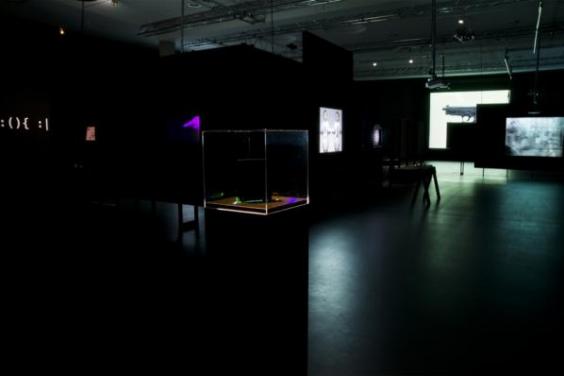
Granted, Dark Drives is one major show in a major Berlin new media festival – the top of a very extensive collection of disparate voices and influences – but it inadvertently highlights a salient thought. What if Bishop’s call to bridge the ‘Digital Divide’ was actually met by a new generation of artists thrust into the mainstream, where digital themes were translated into its own methods of commercial production? We’ve gotten over the myth that ‘virtual’ commodities are unmarketable, so it’s not as if I’m being negative for the sake of it. Where would this leave festivals like transmediale, or not-for-profit collectives like Furtherfield – how would they respond? It’s an uneasy question, one which for speculative purposes cannot be answered quickly at present, if at all.
In the throws of conjecture, there is perhaps another division at play here. Towards the end of her essay, Bishop makes a reference to the difference between the non-existent embrace of the digital medium today, and the rapid embrace of photography, film and video in the 60s and 70s.
“These formats, however, were image-based, and their relevance and challenge to visual art were self-evident. The digital, by contrast, is code, inherently alien to human perception. It is, at base, a linguistic model. Convert any .jpg file to .txt and you will find its ingredients: a garbled recipe of numbers and letters, meaningless to the average viewer. Is there a sense of fear underlying visual art’s disavowal of new media?”
This is a division which is even more striking; more aesthetically and philosophically significant in comparison to marketable rules and unmarketable exceptions. I think Bishop is really on to something when she chastises the hybrid solutions of old media nostalgia, evidently favoured by the market and contrasts it to the alien nature of code, but it’s not without problems.
Some may consider there to be nothing inherently alien about digital media; many artists, who also work as programmers and write, design and engineer artworks together with code without any recourse to an alien nature (however I vehemently disagree with the notion that code be solely reduced to human production, but it must be pointed out) Likewise, any 90s utopian reading of the ‘digital revolution’ is mired from the start, once you take into consideration, closed proprietary devices and services which falsify other meaningful alternatives (one only needs to trace the important work of the Telekommunisten art collective to realise how advanced these questions are, in what is supposed to be a specialised field).
If there is a fear underlying visual art’s disavowal of digitalisation, it’s not just a critical bemusement of code, but of the material which composes computational media; wires, LCD screens, motherboards, caches, firmware, sorting algorithms. Bishop’s call for mainstream contemporary art to be aware of its own conditions and circumstance is admirable, but unless art can actually get its hands dirty with the material processes of new media and more importantly the underlying computational conditions concerning the digital (because thats what it is), the project of explaining these circumstances will be quagmired from the start. It’s not enough to explain ‘our changing experience’ with computation, but to explain the experience of computation in itself.
But for now, lets keep the divide going, not least because antagonisms are fun (Bishop should know), but because the contemporary digital arts are not hindered with the burden of seeking the mainstream’s attention. They can get away with a lot more as a result. Digital or Computational art needs to be cheaper and nastier, as the artist’s tools of use are getting increasingly dirty with critical engagement and proflierfation of code (one cannot avoid mentioning Julian Oliver et al’s important project of critical engineering in this sense). Only then, can Bishop speak of a moment, where the “treasured assumptions” of mainstream art are brought to bear through the criticality of the digital.
——————
* Just to make it clear, I am aware that key terms in this article such as ‘new media’ ‘digitisation’, etc carry little to no relevance anymore, (I prefer computational to be more relevant myself), and they’re only used as a replying dialogue with Claire Bishop’s essay which relies on them throughout.
“Human Readable Messages_[Mezangelle 2003-2011]” is a book published by Traumawien containing almost a decade of Mez Breeze’s “Mezangelle” writings. Mezangelle is hand-crafted text with the aesthetics of computer code or protocols. What marks Mezangelle out is how deep its use of those aesthetics go and how effectively it uses them.
Computer programming languages have their own logic, and it is not captured by holding down the shift key and bashing the top line of the keyboard to add what looks like a cartoon character swearing or random line noise to text. It’s true that programming languages can look incomprehensible to the uninitiated. This Perl code:
y/A-Za-z/a-zA-Z/
will swap the case of lower and upper case English letters. But the conciseness of this notation hides a clear informational structure only in the same way that mathematical or musical notation do.
Likewise the markup language HTML that this article is written in:
<p>looks “<em>gnarly</em>”</p>
and a computer protocol such as email transmission via SMTP:
220 smtp.example.net ESMTP Postfix EHLO someone.example.org 250-smtp.example.net Hello someone.example.org [192.0.2.201] 250-SIZE 14680064 250-PIPELINING
is incomprehensible without reference to detailed technical documents. But all express clear semantic structures and instructions to the computer systems that have been programmed to understand them.
These notations have been created to express data and concepts in structured ways that are possible for computers to work with. They may look typographically arbitrary but they do involve aesthetic choices and historical precedent. They have associations, they have resonances.
We do not usually see the codes involved in our use of computers and the Internet when they function effectively, but they are always there. When they successfully empower or coerce us they become invisible. In the age of social networking, ecommerce, and mobile devices they are pervasive.
What, then, are we to make of Mezangelle? Human written, but intentionally structured in the style of computer code, it recreates the expressive, communicative underpinnings of software syntax rather than simply its surface aesthetics.
To read Mezangelle is to parse it. Parsing in computer software is the process whereby a computer breaks down textual input into smaller and smaller but more and more closely related chunks of meaningful information. Parsing Mezangelle requires the human reader to group and regroup word fragments into shifting webs of meaning. It takes time to do this, and different textual characters and formatting take different amounts of time, adding rhythm and pacing to the meaning of the text.
The history of literary typography, of mathematical notation, and of programming language design has lent a rich range of often contradictory precedents both to software and to writing that draws on its aesthetics. A dot can mean a fraction or a part of an object. A square bracket can instruct a computer to construct a list in memory, to access an element of an array, or to send a message to an object. As can a colon or two, or various arrows. Hashes can indicate comments, identifier numbers, or other entities.
The raw typographic aesthetics of character glyphs spring from their visual form (smooth, straight, long, slanted), size, and relative visual complexity. A full stop or a vertical bar is simpler than a hash or an ampersand. These factors affect how long it takes to perceive them and the effect they have on the eye as we look across them. The glyph-level and code level visual arrangement of code affects the pacing of our reading, building pace and meter. The more semantic aesthetics of the way these glyphs are used to structure code build on and interact with this. And it affects the relations and meanings that we build as we read the text.
Like computer program code, Mezangelle structures its content in order to communicate to and invoke the resources of its parser. Crucially this is a human parser rather than a software one so those resources are aesthetic and cultural. As well as pacing the experience of the text as spoken performance would, these destabilize and expand its meaning as the attention of critical writing does.
The intrusion of quoted plain English text such as an Alan Sondheim piece or an email from a mailing list that have been the inspiration for an answering piece of Mezangelle serves both to show how different Mezangelle is from written English and how effectively it can be part of a conversation.
Here is a line of Mezangelle (broken by the format of this page):
.. my.time: my time: it _c(wh)or(e)por(ous+h)ate_ _experience____he(u)rtz___.] [end]
Read as code, the underscores mean private data and variables, the square brackets mean list construction, message passing, references to individual elements of data structures. The full stops are decimal fractions or references to data or functions that are parts of larger objects. They do not decorate (in the sense of being frivolous), they evoke.
They also semantically structure and pace, allowing reading and re-reading as poetry. Underscores creates distance, brackets group and shift the meaning of words and fragments of words. Addition signs and colons combine concepts and further disrupt the parsing of language as a flat, linear, structure.
Mezangelle is distinct from much historical code poetry in its structural and semantic mastery of the aesthetics of code. It is distinct from concrete poetry in its semantic, destabilizing, temporal rather than merely structural use of typography.
Mezangelle is net art, it is produced and encountered in the environment of the Internet. Mezangelle lives in blogs and on mailing lists. But it does not die on the printed page, far from it. “Human Readable Messages” is typeset in Donald Knuth’s Computer Modern font, a beautifully spindly artifact of the early days of computer typesetting, with the occasional intrusion of Courier-style monospaced teletype/typewriter fonts. This gives the printed text a digital, online feel retaining a genetic link to the environment it originated in.
Mezangelle surfaces and integrates the hidden aesthetics of computer mediated human activity, setting computing and human language in tension and synthesizing them. It expands the expressive possibilities of text and is a form of realism about the conditions in which human reading is currently flourishing. “Human Readable Messages” provides an ideal opportunity to familiarize ourselves with Mezangelle in the depth that it deserves and rewards.
The text of this review is licenced under the Creative Commons BY-SA 3.0 Licence.
Featured image: Artist Suguru Goto discusses his work.
London 2012: there is of course one event which springs to mind when we think about this city and the year we’re in, but there is also another significant event happening in London right now, one which is very important for the digital and media arts world. It is the year that Watermans Arts Centre is holding the International Festival of Digital Art 2012.
As well as showcasing an array of digital art by internationally renowned artists, the programme also offers the opportunity for members of the public to get involved in discussions around themes that the Festival touches on through the seminar series accompanying the shows. These are in collaboration with Goldsmiths, University of London. Nearly three months in, the Festival has launched two exciting shows,Cymatics by Suguru Goto and UNITY by One-Room Shack Collective.
The first show, Cymatics, is a kinetic sound and sculpture installation that expresses Goto’s vision of nature. To enter it, the audience step through a door into a boxed, dark room within which they are presented with a touch screen interface, a shallow metal tank holding water and a screen showing a video feed of the water in the tank. The piece invites the audience to move the water in the tank by manipulating sound waves via an interactive screen. The result of the interaction is a stunning variety of geometric shapes, demonstrating the distortion that sound waves can have on a substance. This occurrence reveals the bridge between technology and nature, which fits into Goto’s re-occurring theme within his work of the relationship between man and machine.
The seminar which coincided with the show, Interactivity and Audience Engagement, was chaired by Régine Debatty and featured on the panel Tine Bech, Graeme Crowley and Tom Keene, all who which explore audience engagement in different ways within their work. Tine Bech is a visual artist and researcher whose installations invite audiences to engage in playful interactions, from chasing a motion reactive spotlight in Catch Me Nowto sound triggering shoes in Mememe. Tom Keene is an artist technologist whose focus intersects participation, communication and technology. His work is multidisciplinary, investigating the way we communicate, mediated by technology. His practice is diverse, from exploring the potential relationships between networked everyday objects in Aristotles Office to inviting a community to comment on their local issues through signs in Sign X Here. Graeme Crowley is a designer and artist who has created installations for prominent public areas, including The Wall of Light, commissioned by Arrowcroft Plc for the centre of Coventry and Spiral/Bloom commissioned for a hospital in Rochford by the NHS.
I found the juxtaposition of these three practitioners very interesting as each of them explore the interaction between audience and technology in varying ways. Bech’s work is very tactile and sculptural, almost making people forget the technology behind it. She likes to look at technology as something we can mould and which can be used to explore the wider issues which art can bring up, rather than just focussing on the tech itself and how ‘shiny’ (to use her own term) it is. In contrast to this, within Keene’s practice technology feels very prominent, visually as well as conceptually. Crowley’s focus is different again as it mostly operates within the commercial sphere. It therefore is produced for greater public consumption and needs to withstand being a permanent exhibit, becoming part of the architecture it is planted on rather than something which is temporary. The talks given by each panel member and discussions which accompanied them were all diverse and brought up interesting points around the idea of audience engagement and interactivity. Members of the audience entered into these discussions with ease, creating an open dialogue which itself was participatory and engaging.
UNITY, by One Room Shack is the current exhibit as part of the International Festival of Digital Art 2012, bringing a piece of work to the gallery which aims to embody the Olympic spirit, visually as well as conceptually.
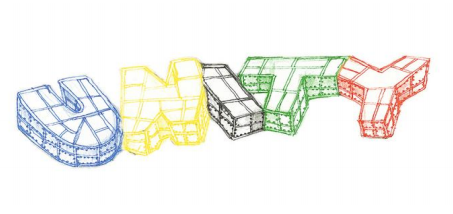
Design for Unity
The installation takes the form of a transparent maze, angular in its structure and illuminated with different coloured LED lights in each section. Each illuminated section of the structure forms a different letter, all together spelling the word ‘unity’. As the audience navigate their way through the installation, their movement is picked up by motion sensors, triggering the LEDs at each point to turn on. These each represent a particular colour of the Olympic rings.
The ideologies of the Olympic Games linked with an immersive space explores the value of ‘being together’, something which the African humanist philosophy Ubuntu also speaks about.
UNITY is effective in exploring the theoretical concepts embedded within it through a playful and simple interactive structure. As an individual you step from section to section with the different groups of LEDs individually illuminating you as you go through the work. When a group of people interact with the piece at the same time however, the piece lights up as a whole, echoing the values of being together that UNITY invites us to explore. It is through enabling this experience, that the work celebrates and explores human connections.
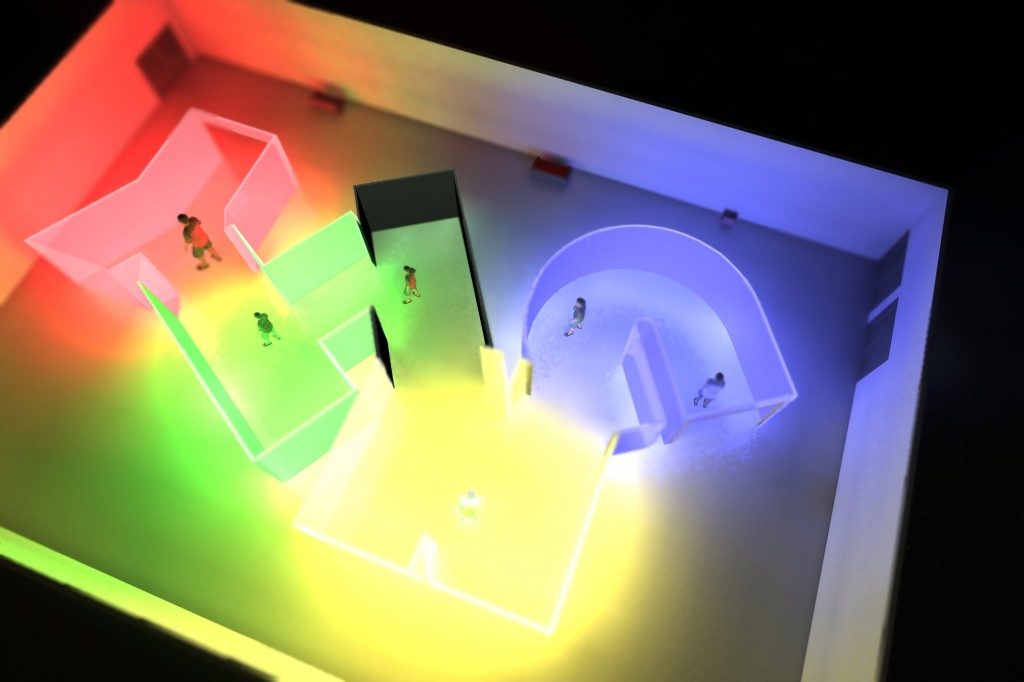
I do find it interesting how the piece has such a strong stance towards the more idealistic ideologies of the Olympics, especially when taking into account the anti Olympics sentiment present in London. The event does bring people together, but unfortunately as we’ve seen in East London and also at previous Olympic locations across the globe, they also have the ability to put local communities at risk through rising rents and eviction [1]. UNITY looks at ‘…understanding the implication of UNITY on humanism in a neo-liberal world where hyper-capitalism and love of excess trump compassion and selflessness.’ [2] but in reality, the Olympics have unfortunately become something which arguably embody these traits. This said, I do think that UNITY is an incredibly beautiful piece in its visual execution and that its interaction compliments the theoretical idea which it is looking to address.
I look forward to the remainder of the International Festival of Digital Art 2012 and the eclectic ideas within media and digital art which the programme explores. I interviewed Irini Papadimitriou, Head of New Media Arts Development at Watermans, about the Festival:
Emilie Giles: First of all, can you tell us what the premise is behind the International Festival of Digital Art 2012?
Irini Papadimitriou: The idea behind the Festival started from a decision to develop a series of shows that could form a discussion rather than being one-off exhibitions and help engage more people in the programme. In the last year we have been focusing more in participatory and/or interactive installations so I thought it’d be interesting to dedicate this project and discussions in exploring more ideas behind media artworks that invite audience engagement as a way of understanding our work in the past year.
Since this was going to take place in 2012 we felt it would be necessary to open this up to international artists so this is how the open call for submissions came up last year. We received so many great proposals it’s been very hard to reach the final selection, but at the same time the opportunity of having a year-long festival meant we could involve as many people as possible and hear many voices not only through the exhibitions (this is just one part of the Festival) but also with other parallel events such as the discussions, presentations of work in progress by younger artists and students, the publication, a Dorkboat (coming up in June with Alan Turing celebrations), as well as collaborations with other organisations or artists’ networks and online.
EG: Touching on your last answer, the Festival has a clear aim then to engage people in discussion rather than just being viewers of a show. Do you think that within media and digital art there is a particular need for this approach?
IP: I think that hearing people’s thoughts and responses and enabling discussion is important for all exhibitions and art events but specifically for the Festival (since the aim is to question & explore audience participation). It was very relevant to hear ideas and views from other artists, technologists, practitioners etc but also audiences, rather than just the participating artists.
Also, and this is my view, I think as media and digital art use technologies that many of us are not particularly familiar with or if we use technologies it will be most probably as consumers, it’s important to talk about and discuss the process (as well as impact of technologies) both for the artists as well as for audiences.
EG: The themes chosen for the programme are diverse and each relevant to media and digital art in their own way. What are the reasons for each focus and why?
IP: The themes explored in the Festival result mainly from the selected proposals and discussions with the artists. There were so many things to talk about so having these themes was a way to start from somewhere and help understand better the installations shown throughout the year. The seminars that we are organising are an opportunity for the artists to talk about their work and share their ideas with both audiences but also with other artists invited to take part in the panels. It is also a way of discussing these themes and presenting other work that raises similar issues. The seminars are shaped around the themes such as perception and magic in digital art, sound and gesture, geographies, virtual spaces as artistic mediums and of course participation and interaction. We are currently working on a publication with Leonardo Electronic Almanac which will be coming out in the next couple of months and will include essays from artists, academics and students as well as interviews with the artists behind the selected proposals. Again the catalogue has the Festival themes as a starting point but we tried to combine different content and ways of communicating these.
EG: How do the pieces featured in the exhibition question audience engagement, participation and accessibility ?
IP: The artists presenting work are exploring participation and audience engagement in different ways and I think we will have also interesting outcomes from the seminars and the publication which will allow us to explore these ideas further.
In the current installation, UNITY, One Room Shack collective are using the playful structure of a maze (in the form of the word UNITY with each letter lighting up in the colours of the Olympic rings) inviting people to walk inside to reflect and draw upon the complex nature of human reality and ‘difficult’ aspects of human existence.
Michele Barker and Anna Munster who will be showing HokusPokus later on are interested in exploring how we perceive actively in relation to our environment, how we see, what we see and how this makes us ‘interact’. HokusPokus inspired from neuroscience examines illusionistic and performative aspects of magic to explore human perception, movement and senses. The tricks shown in HokusPokus have not been digitally manipulated; they will unfold temporally and spatially, amplifying and intensifying aspects of close-up magic such as the flourish and sleight of hand.
The Festival will close with an installation by American artist Joseph Farbrook, Strata-Caster, which was created in Second Life mirroring the physical world, exploring positions of power, ownership, identity and drawing parallels between virtual and physical worlds. An interesting and important part of the installation is the use of a wheelchair by visitors to enter and navigate Strata-Caster.
EG: How have the 2012 Olympic and Paralympic Games inspired the Watermans International Festival of Digital Art?
IP: As we are trying to explore what participation is we thought it would be an interesting link (rather than inspiration) between the Festival and the Games/Cultural Olympiad since they are meant to symbolise, promote and inspire values like creativity, collaboration, participation, engagement etc. The Festival isn’t about the Olympics and participating artists didn’t have to propose work that linked to the Games, but we did receive many proposals that reflected on the Games, what they represent and the meaning of participation, so some of these proposals are being shown as part of the Festival, such as One Room Shack’s UNITY and Gail Pearce’s Going with the Flow.
An Interview with Julian Oliver By Taina Bucher.
I met the Berlin-based media artist and programmer Julian Oliver in Toronto as part of the Subtle Technologies festival, where he taught a workshop on the Network as Material. The aim of the workshop reflects Oliver’s artistic and pedagogical philosophy nicely; to not only make people aware of the hidden technical infrastructures of everyday life but to also provide people with tools to interrogate these constructed and governed public spaces.
Julian Oliver, born in New Zealand (anyone who has seen him give a talk will know not to mistake him for an Australian) is not only an extremely well versed programmer but is increasingly as equally knowledgeable with computer hardware. His background is as diverse as the places he has lived and the journeys it has taken him on. Julian started out with architecture but became increasingly interested in electronic art after working as Stelarc’s assistant on ‘Ping Body’, Auckland,1996. He moved on to Melbourne, Australia, and worked as guest researcher at a Virtual Reality center. Later he established the artistic game-development collective Select Parks and in 2003 left for Gotland to work at the Interactive Institute of Sweden’s game lab. He then moved on to Madrid where he had extensive involvement with the Media Lab Prado. Several countries, projects and residencies later, he made Berlin his preferred base, setting up a studio there with colleagues. Julian is also an outspoken advocate of free software and thinks of his artistic practice not so much as art but more in terms of being a ‘critical engineer’, a term that he applies particularly to his collaborations with his studio partner Danja Vasiliev.
Their latest collaboration called Newstweek, was recently announced as winners of the Golden Nica in the Interactive art category of the Prix Ars Electronica 2011. The project leverages on the network as a medium for rigorous, creative investigation, exploring the intersection between the perceived trustworthiness of mass media and the conditions of networked insecurity.
His artistic practice clearly reflects his hacker and gaming background, playing around and messing with routers, capturing data from open wireless networks, visually augmenting commercial billboards in the cityscape, sonifying Facebook chats, visualizing protocols and otherwise manipulating networks for artistic purposes. I sat down with Julian on June 1st to talk about his most recent art projects, his reflections on software and digital media arts more generally. The interview was transcribed from a voice recording in a busy cafe to the best of my ability.
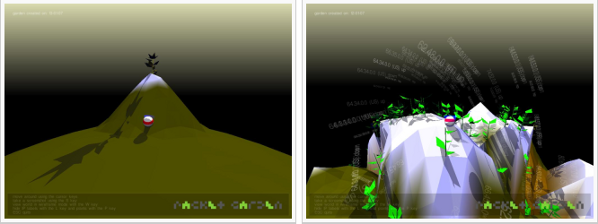
Taina Bucher: You started out with architecture and then moved over to games. How did that transition come about?
Julian Oliver: I realized quite early on that I was less interested in buildings than I was in exploring architecture in the context of the language within which it operates. I was more interested in hypothetical architecture. Like impossible structures such as what Buckminster Fuller proposed, and when I ended up working in a virtual reality centre in Melbourne I found that sitting behind a bunch of SGI machines dedicated to rendering virtual experiences, that I no longer really needed to invest in the idea to build something. I was more interested in something more plastic and mutable. The bridge from there to games came about around 1997-1998. Source code from games started to become available and it became apparent to me that it was possible to modify these games to explore an artistic practice, an architectural and sculptural practice really, using the medium of computer games. There were only 4-5 of us in the world working on this and we quickly made contact with each other. I left the VR centre and started an artistic game based modification lab in Melbourne called Select Parks. For about six years we did a whole bunch of projects based on computer games. We also established an online archive of the ever-increasing experiments and artistic investigations into computer game technology under selectparks.net. The archive is still there now.
TB: Was it the same interest in the mutability of the medium that led you to work with software more generally?
JO: I’ve been programming since I was pretty young and I’ve been around computers since I was a boy and working with them, but it was when I started to increase my freedom of movement with the medium of computer games that I became a programmer. I started to learn C, C++ and scripting languages and I quickly became hooked with the mix between technical challenges and rigorous creative exploration. I think the balance of the two still remains in my work.
TB: In one of your academic papers on games you ask the question of how much of the medium, as a raw field of possibilities, really is available to the artist. Well, let me ask you the same question in relation to software given that software always comes with a certain kind of aesthetic expectation.
JO: Definitely. I think it is a bit of a shame that much of what is called digital art is in fact made by using software suits built by large corporations. Macromedia, now the Adobe suite, is almost an infrastructure of the media arts. Painters of 200 years ago would never have accepted this brand attached to their canvas. They would never have accepted that their tools would be designed with such a generic mass audience in mind. I think that while the digital arts are certainly an exciting field there is an unadmitted dependency on a food chain that comes entirely from a corporation. The contemporary artist would then talk about breaking these tools, or you know, misusing them. But who is really holding the power? I think at a certain point for me, this was the reason why I moved entirely into free software. I really wanted to look at software as a core medium itself and I wanted to get at the guts of it. I wanted to have a rigorous personal relationship with technology so that I could bend it to my needs rather than my needs being bent.
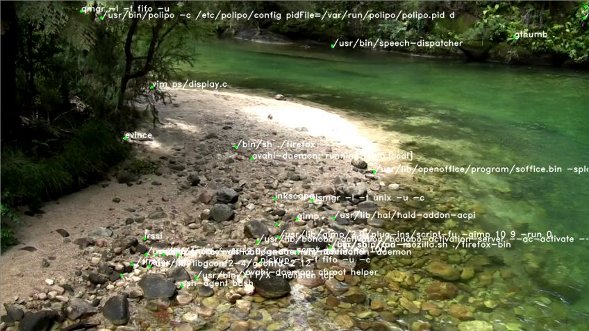
TB: How do you picture a genuinely critical media arts practice then, moving away from the Adobe suites of the world?
JO: No, I think it is fine to use Adobe if it satisfies your expectations. However I think that the expectations themselves are already defined by these external corporate market inputs. I think it is really important for digital artists to understand what digits are. They call themselves software artists but they do not really write software or know what it is. By using it their works become symptomatic of a process that they themselves have not defined.
TB: Does this mean we have to know code in order to be critical of code?
JO: Yes. I think you need to speak the language. It is the same thing with other cultural practices; you need to know the basics of how a violin or a guitar works before you can pass a judgement on the player. There is a parallel history to the new media arts that is not written and that’s all of those technical and cultural contributions that artists and technologists make when they are producing a work of new media. There is certainly a very well written history for the work of art in the galleries but there is nothing of the sorts for the fundaments of the technical achievements. I mean we have that with music for instance, with the evolution of the piano, but there are things happening in the new media arts all the time that no one other than the technologists can really appreciate. These are significant contributions that actually shape the way in which media are used in the future. This is certainly the case with the development of a new programming language that a historian might not necessarily notice. A language like Python or a framework like open frameworks has shifted media arts in such an influential way. Most people only see the end product. Understanding just a little in this regard is enough for enriching the history of the field I think.
TB: One could certainly argue that the ‘democratization of code’ with web 2.0 technologies and open APIs potentially lets anyone produce software art?
JO: Yes certainly. Take Processing for instance, anyone can make a digital square if they want. There is nothing inherently wrong with that. What I am interested in is to make people understand what’s behind it. I think we as artists need to describe what we do and part of this is to publish the source code. For me personally this is an obligation. By publishing the source code I am enriching the scene by allowing other people to have an insight into how it works. Take the project that Danja and I have been doing with Newstweek. If we would hide the way it works it would not enrich anything. We’d only be contributing to our own careers. We therefore publish all our code. You can download it now and already be learning how we did it and so together as a whole we move forward.
TB: Is code ever finished?
JO: That’s a really good question. Probably not. Someone could come along and improve what you think is finished. Every problem can be solved in a multitude of different ways. What constitutes being finished for one program might be elegance of expression. For another one it might be its performance. There are different value systems for programmers. Code in an open context, that is published openly, tends to be living or have the opportunity to live and be contributed to.
TB: You mentioned that most people do not know what software is, would you mind elaborating on that?
JO: Software in its simplest form is a group of instructions that work together somewhat contiguously to process data with an intended outcome. Data itself is everything that is not program code and program code itself is instructions written in a human readable language that are compiled into a form that the computer can understand. Computers have their own language; they are interpreters in a sense. You can really understand software as an automation of multitudinous processes to speed up the production of an intended or desirable outcome. Decision-making can occur, so it is not just a one-dimensional procedure. For the user though, software is generally just a skin of metaphors. If you think about it, clicking a picture becomes an initiation of an event and software is made to allow for the clicking of pictures to allow it to start a program. I mean software is many things at the same time, a field of illusions and metaphors.
TB: To what extent can you be taken by surprise by the software as an artistic medium given that it is your instructions?
JO: Well it depends on the scale of the project. Much of the time the software is a field of limitations. Working with software is about finding ways to make these limitations work and move within them. Unless you (of course) do something in Processing and you just want it to make a square then you just want the program to do exactly this. But for more complex projects I’d describe computer programming as a process of self-humiliation. It is about finding out how poor your initial assumptions about your own abilities are, you feel frustration and you need to fight against your own attention deficit disorder. It is a conversation with yourself, self-development ultimately. Secondly, it is a process of breaking down big problems into smaller ones until so much of the smaller problems are solved that the big one is solved too. But first and foremost I think that software development is self-development.
TB: Speaking of self-development. It is interesting to note that you have in a way returned to architecture, the difference being that you are not sculpting the physical space but the immaterial space. Maybe more so than building things one could say that you deconstruct them, take them apart through intervening and disrupting space.
JO: Yeah. Danja and I work together a lot these days and we refer to ourselves less as artists than as critical engineers. We firmly believe that the most transformative language of our time, one that defines whole economies, I mean how we trade, how and what we eat, how we converse with each other, how we move around the world is engineering. Art itself is increasingly diluted in transformative power, it has become more like entertainment than necessarily anything that is intrinsically rigorous. In the early days of the 1920s and 1930s we had interventionists’ strategies that are now known as art but they didn’t call themselves artists at the time. So as I have been saying to myself quite a lot recently it doesn’t matter if I call what I do art, others will do it for me anyway. So I better describe myself as a critical engineer by taking the language of engineering and lifting it out from a strictly utilitarian space and look at it as a language for rich, critical inquiry and really take on that challenge. It is really about taking the language of engineering and blowing it wide open, taking it away from this kind of black box reality, of big companies making stuff for civilians. This is essentially our relationship to technology. The companies and government make technologies upon which we depend and I think as any technology becomes more ubiquitous like smart phones our ignorance increases. With ubiquity comes ignorance and it seems to be a plottable, predictable curve. The idea of being a critical engineer is to intervene at this point and say “No! Stop!”. We need to reflect on what we are working with and how what we depend upon is shaping us. So learning this hard stuff in order to evade the top down superstructure is necessary.
TB: This might be a good transition to talking about Newstweek, a project that precisely seeks to evade the top down superstructure that you mentioned. How did this project that you’ve collaborated on with Danja Vasiliev come about?
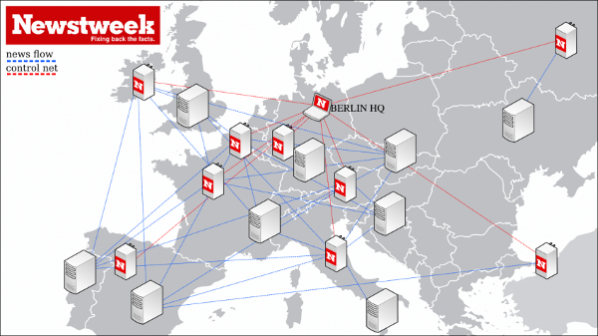
JO: We were at the Chaos Computer Club early this year and we put a little plug into the wall where we put a small router inside. Our goal was really simple, to go into the Berlin congress centre with thousands of hackers and put the thing into the wall and see how long it would last without anybody noticing. We expected it would last a few hours but it was there for the entire conference. One could see it from hundreds of meters away but nobody did something about it, so we realized we were onto something. So we wanted to build a device that looks so much like part of the infrastructure that it would appear harmless.
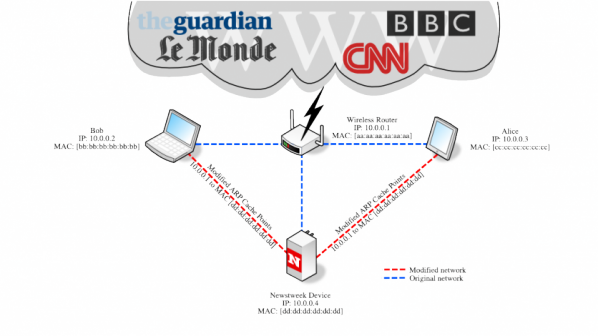
Newstweek: fixing the facts from newstweek on Vimeo.
The second thing was to couple it with a man-in-the-middle attack and to interrogate what we increasingly refer to as a browser-defined reality. Meaning that if it manifests in the browser, it is somehow authentic. It is this idea of going to a major news site, and as long as what one sees comes from this imaginary thing called a server and propagates in your browser, it is somehow trustworthy. We wanted to explore the limits of the impossibility of intervening in an otherwise top-down distribution of news. We wanted to find an on-the-ground way for civilians to intervene with this authority by manipulating the facts. It is really about allowing for a lateral interception of news sources, such as the BBC, the Guardian and CNN.
TB: Did you also record or document people’s reactions to their suddenly altered or tweaked news?
JO: Yeah, we have done this. The thing for us though was merely to provide a platform. People didn’t really believe that Newstweek worked. So we released the how-to saying here is where you buy the hardware, how you open it up, the firmware, the script, and so forth. Only then we had this quiet retrospect where people were going “aha”. What we have changed is their relationship with their environment. It doesn’t matter whether there has been a Newstweek-device in the environment or not. The very fact that they are looking around them and thinking that what is happening in their browser may have been tweaked is the most desirable outcome. This is exactly what happened. Most of the comments are of that nature, saying, “I will never trust the news again”. I mean, even when the attention for the project falls back to the sleepy town of acceptance, I think we can still be very proud of ourselves.
TB: Not just Newstweek, but much of your work is about intervening in public space and exploring the meaning of place. What do these concepts mean to you?
JO: Well I am very interested in the writings of Edward S Casey and the phenomenologist’s Husserl, Mearleau-Ponty and Heidegger of course. One of the great things that has come out of that thought is that Space in itself does not really exist, just as there is no number 2 in the universe. What we have done is to create a concept in order to pre-empt space, to reduce contingency, and in this way so much scientific thought is about reduction of contingency. Space of course is a projection of mathematical constituents to make determinations. Through mathematics and cartography and the like we have seen a growth in trust in the space model rather than the place model. So what I am really interest in, is that rationalization of place has allowed us to live in cities, which have been atomically and economically particularized, privatized. I am interested in how the distinctions between public and private is often extraordinarily blurry. A good example is the fact that a company can pay to put a huge picture outside your apartment during construction for instance yet when it is a millimetre or two away from your wall it no longer belongs to you. Or when you are drilling a hole through your wall in your house at a certain point you are going to hit the neighbours next door. Where does it begin and where does it end? It really shows that territory and place are just constructions. The same goes for wireless technology.
TB: Why is it important to question the ways in which we experience public space?
JO: Well take my work Artvertiser as an example. We have come to accept that our cities are covered in proprietary imagery. So I find it important to question this read-only space much in the line of ad busting and culture jamming. We just did a big streetwise exhibition in Helsinki where artists chose their brands and they made concise commentary simultaneously finding a new way of being in their city.
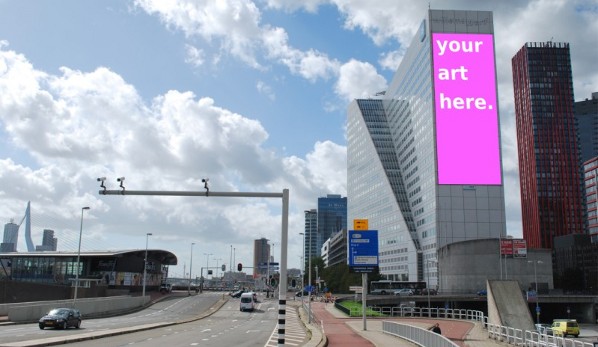
TB: Place often resides in memory and to a certain extent requires permanence. With Artvertiser it is only a temporary intervention. In the end the proprietary imagery stays. What do you hope people take away from an artwork like the Artvertiser?
JO: True. But again, the most productive outcome is conversation. We have the public coming up and looking again and again, through the binoculars at the modified billboards. We even had security guards getting angry. I mean all we are doing is producing a new experience in the visual cortex. Why would a member of the public like the security guard get angry that we are modifying our own experience voluntarily? It is kind of curious.
Form+Code In Design, Art and Architecture
Casey Reas, Chandler McWilliams, LUST
2010, Princeton Architectural Press
ISBN 9781568989372
Form+Code is an art computing programming primer. Rather than teaching any particular programming language it explains the technical and conceptual history of programming and its use in art. Starting with an introduction to the basic concepts of coding, instructions, form, and different ways of representing them (in sections titled “What Is Code?” and “Form And Computers”), it moves on to chapters covering “Repeat”, “Transform”, “Paramaterize”, “Visualize” and “Simulate”.
The basic concepts of programming are explained clearly with plenty of examples of code, hardware, and output. They are also related to broader art history, with examples drawn from conceptual artists such as Yoko Ono and Sol leWitt. And it’s good to see Jasia Reichardt’s pioneering work in bringing art and code together is recognised not just in the form of the Cybernetic Serendipity show at the ICA in London but her books and articles on art computing as well.
There is a little code, enough to give a flavour of what it looks like but not enough to intimidate. Listings in or examples of output from BASIC, LOGO, BEFLIX, Hypertalk and other important historical programming languages are presented. PostScript is given its due, with listings, examples of output and a discussion of its incredible impact on the graphic design industry.
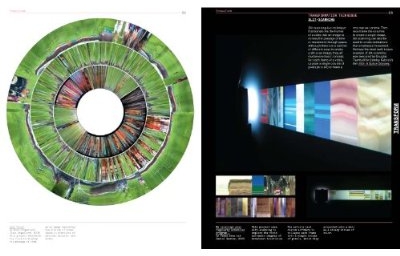
Form+Code is about hardware as well as software. The Difference Engine, ENIAC, oscillioscpes, the PDP-1, arcade games machines that used vector graphics, and the Atari 2600 are all included in a historical narrative of computing and art. The book also describes and shows examples of output from printing hardware from pen plotters through laser printers to CNC and stereo lithography machines, providing a historical and conceptual grounding for thinking about the most advanced output devices currently available.
“Repeat” is explained starting with the Jacquard Loom, and the art of Bridget Riley and Andy Warhol before moving on to variations on a simple BASIC program with illustrations of its output. Packing this amount of historical, computer science and artistic information into each chapter would be overwhelming were it not for the book’s clear writing, structure and design.
“Transform” touches on Holbein’s “Ambassadors” and Victor Vasarely’s Op Art as well as the basic mathematics of folding a piece of paper. “Parameterize” has Dada, Duchamp, the Beats and Calder’s mobiles. It mentions grids without mentioning Rosalind Krauss (the book as a whole is pretty much Theory free), and explains how you use variables to produce variants on the same form.
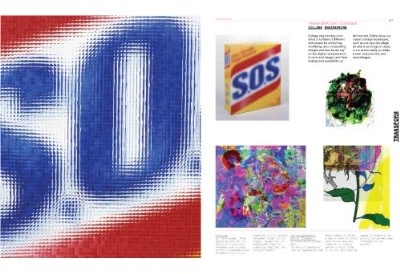
“Visualise” and “Simulate” are almost devoid of (non-computer) art historical examples and cultural context. Harold Cohen’s AARON is illustrated, and Douglas Hofstadter, Richard Dawkins and Stephen Wolfram’s ideas are mentioned. More people should know about the wokr of Hofstadter’s FARG, and the concepts, work and writing presented are still a treasure trove of information and inspiration. But these chapters lack the art historical context of their predecessors.
The contemporary visual art computing presented is mostly in the generative art / data visualisation mold. It’s highly structured, would mostly be impossible to produce without computers, and is haunted by the possibility of being merely decorative. The only academically recognisable critical art included is one of JODI’s less threatening browser pieces. But the example of worldmapper.org in the chapter on visualisation shows how the aesthetic tools of data visualisation can be used politically. And the formal structures and creative strageties of much of the art has a quality of realism in the age of networks that is a challenge to Theory rather than a falure to illustrate it.
The success of books intended to provide a comprehensive foundation in an area of the study of art, such as “Art In Theory” or “Basic Design”, have both helped to enrich the study of art and had the unintended consequence of closing off other possible narratives. Form+Code stands to be as successful in its own area as those books were in theirs, with the same benefits and dangers. Form+Code’s ommission of virtual reality, livecoding, and other movements within art computing are understandable given its focus, but hopefully won’t lead to their neglect by students.
Could you code up any of the software art that you see in the book after reading it? No. The only code listings are historical fragments. But after reading the book you will undestand the concepts that you need both to figure out what more you need to learn in order to program such art and to understand why doing so is aesthetically and art historically worthwhile. And some source code from the book, in various programming languages, is available online.
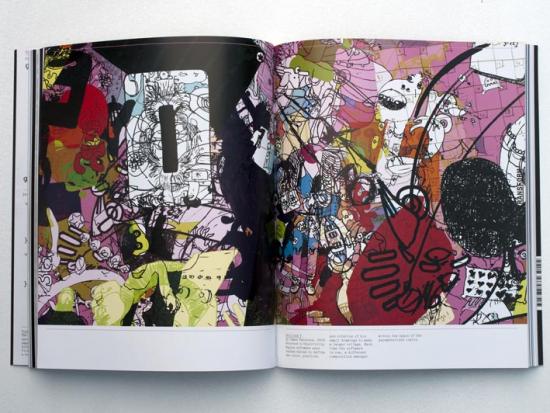
Form+Code’s major achievement is that it presents technical, art historical and technical historical information in such a way that it complements each other and builds a bigger picture that demonstrates the wider relevance and further potential of art computing programming. Having read it, you’ll know more and you’ll both want to and be able to learn how to do more. It’s clearly laid out, packed full of illustrations, occasional code fragments, plenty of references to sources for further investigation, and even has a good index. It really is a foundation course in a book, providing a sound basis for further learning or research.
If you teach art computing, and if you are teaching art, graphic design, textiles, fashion or architecture then you are teaching art computing to a greater or lesser degree, then Form+Code is a perfect primer for the conceptual, historical, and cultural side of computing and art computing. Outside of education, if you are involved in art, computing, or are a non-programmer computer-using artist Form+Code provides a good grounding in the concepts used in programming for art computing.
Form+Code serves as a complete introduction to the conventional history, concepts and practice of visual art computing. It presents that information in the context of the broader history of art and design. And it provides enou